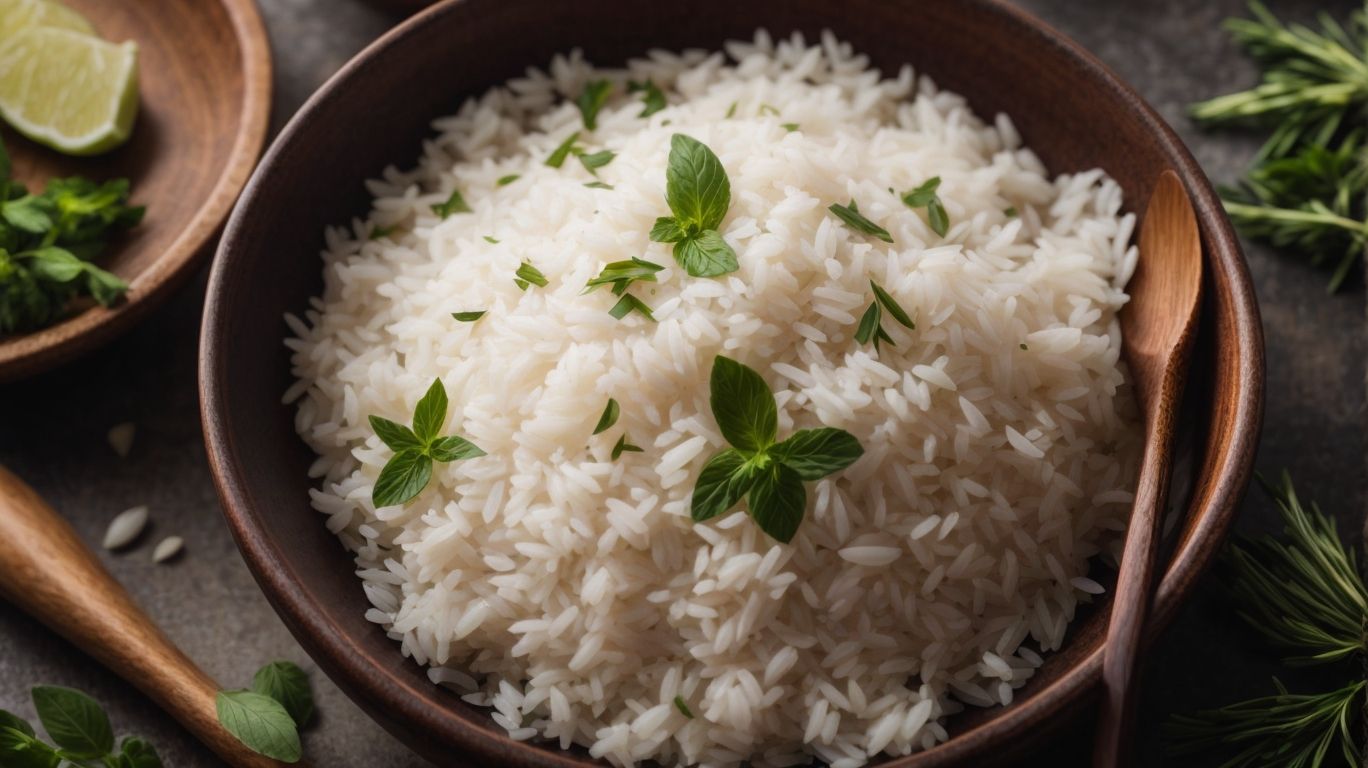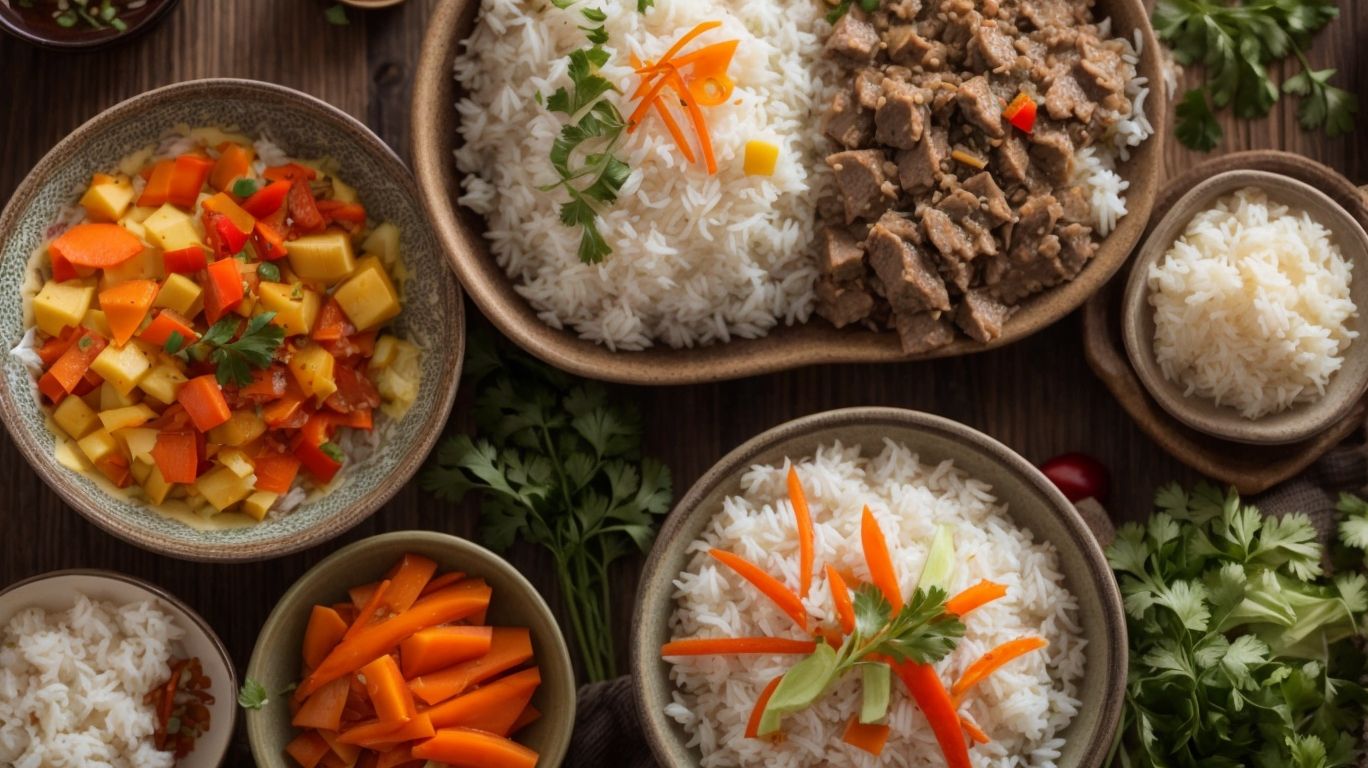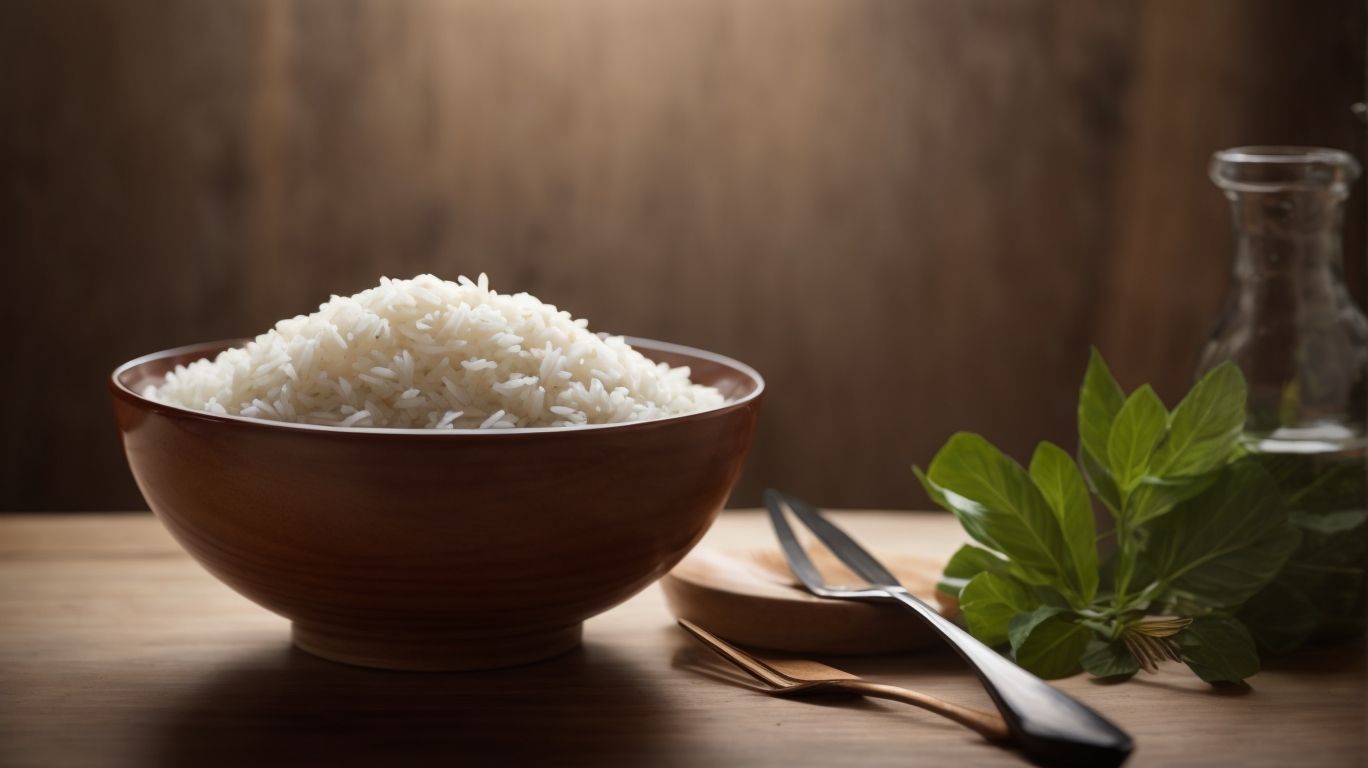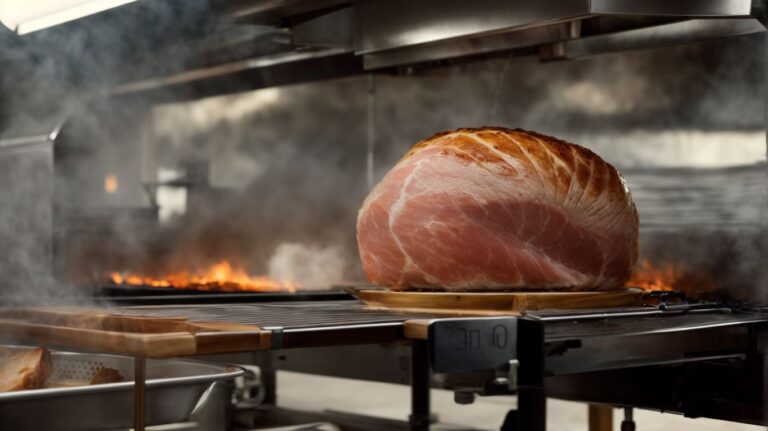How to Cook Jasmine Rice Without Sticking?
Are you a fan of jasmine rice but struggle with it sticking together when you cook it?
In this article, we will explore everything you need to know about jasmine rice, from its benefits to the different types available.
We will also delve into why jasmine rice tends to stick and provide you with step-by-step instructions on how to cook it perfectly without any sticking.
Plus, we will give you some creative ideas on what to do with any leftover jasmine rice you may have. Let’s get cooking!
Key Takeaways:
About Jasmine Rice

Credits: Poormet.Com – David Lee
Jasmine Rice, a staple in Thai and Asian dishes, is renowned for its delicate aroma, fluffy texture, and ability to enhance the flavors of the dishes it accompanies.
With origins dating back to Thailand, Jasmine Rice is not just a mere ingredient but a symbol of cultural significance. Its name is derived from the sweet-smelling jasmine flower due to its similar fragrance when cooked. This fragrant rice variety is a versatile ingredient that can be used in a myriad of dishes such as stir-fries, curries, and even desserts. Whether served plain as a side dish or flavored with coconut milk and herbs, Jasmine Rice elevates the dining experience with its subtle yet distinct aroma and flavorful profile.
What Is Jasmine Rice?
Jasmine Rice, also known as Thai fragrant rice, is a long-grain variety that boasts a subtle floral aroma and a soft, slightly sticky texture when cooked.
Jasmine Rice’s appearance is characterized by its slender grains that become slightly translucent after cooking, reflecting a pearly white color. It is the fragrance, reminiscent of pandan or jasmine blossoms, that sets this rice apart from other varieties, making it a popular choice for enhancing the flavor of Asian dishes. This distinctive aroma adds depth to dishes and elevates the overall dining experience.
What Are the Benefits of Cooking with Jasmine Rice?
Cooking with Jasmine Rice offers numerous benefits, including its ability to absorb flavors, retain moisture, and complement the savory notes of Thai and Asian dishes.
Due to its fragrant aroma and slightly sticky texture when cooked, Jasmine Rice is a popular choice for a variety of cuisines, not just limited to Asian dishes. One of its key advantages is its versatility in absorbing different flavors, making it an excellent base for dishes with rich sauces or spices.
When preparing Jasmine Rice, using a proper water-to-rice ratio is crucial for achieving the desired fluffy texture. Typically, a ratio of 1:1.5 or 1:2 depending on the desired consistency is recommended. This optimal ratio ensures that the rice cooks evenly and does not turn out overly mushy or dry.
What Are the Different Types of Jasmine Rice?
Various types of Jasmine Rice exist, with each region—such as Thailand, Cambodia, Laos, and Vietnam—producing its unique variation, ranging from sticky to long-grain white rice varieties.
Thai Jasmine Rice, also known as Hom Mali rice, is renowned for its delicate floral aroma and slightly sticky texture, making it ideal for dishes like traditional Thai curries and stir-fries.
Cambodian Jasmine Rice, referred to as Phka Malis, boasts a fragrant aroma and fluffy texture, perfect for accompanying grilled meats and salads.
Laotian Jasmine Rice is prized for its soft, sticky consistency, favored in Laotian cuisine for dishes like larb and sticky rice desserts.
Vietnamese Jasmine Rice, known for its subtle aroma and long, slender grains, is versatile and can be paired with a variety of dishes from Vietnamese pho to savory sauces.
Why Does Jasmine Rice Stick?
Jasmine Rice tends to stick due to its starch content, requiring careful attention to water ratios, cooking techniques, and heat management to achieve the desired fluffy consistency.
Regarding starch composition, Jasmine Rice contains a higher percentage of amylopectin, the sticky starch component, compared to amylose, the non-sticky starch component.
This distinctive composition plays a pivotal role in the rice’s stickiness during cooking.
By adjusting the water ratios appropriately, one can control the stickiness level of Jasmine Rice.
What Causes Jasmine Rice to Stick?
The stickiness of Jasmine Rice primarily stems from its amylopectin content, a type of starch that contributes to the rice’s adhesive texture when cooked.
When Jasmine Rice is cooked, the amylopectin molecules in the rice granules absorb water and swell, resulting in the sticky consistency that is characteristic of this variety. Unlike long-grain rice, which contains more amylose and remains separate when cooked, the higher amylopectin levels in Jasmine Rice give it that desirable stickiness.
To achieve the perfect stickiness when cooking Jasmine Rice, the key lies in the water ratio and cooking method. For a stickier texture, a slightly higher water-to-rice ratio is recommended, allowing the rice to absorb more water and consequently, more amylopectin. Methods like soaking the rice before cooking can enhance the stickiness further, by giving the starches more time to hydrate.
It’s essential to note that the stickiness not only affects the texture but also plays a significant role in the flavor profile of Jasmine Rice. The adhesive nature of the rice helps it hold onto sauces and flavors, making it a popular choice for dishes that benefit from the rice absorbing and complementing the accompanying flavors.
How Can You Avoid Sticky Jasmine Rice?
To prevent sticky Jasmine Rice, it is crucial to rinse the rice, use the correct water-to-rice ratio, incorporate aromatic elements like Star Anise, and apply precise heat control during the cooking process.
When rinsing the Jasmine Rice, make sure to gently wash it under running water until the water runs clear, which removes excess starch that causes stickiness. For the water-to-rice ratio, a general guideline is 1:1 to 1:1.5 depending on the desired texture – less water for firmer rice and more for softer. Star Anise can enhance the flavor profile of the rice, but ensure not to overpower the delicate Jasmine aroma. Heating the rice gradually and maintaining a steady simmer helps to prevent overcooking and stickiness.
How to Cook Jasmine Rice without Sticking?

Credits: Poormet.Com – Ryan Williams
Mastering the art of cooking Jasmine Rice without it sticking involves a precise process, from rinsing the rice to managing the water-to-rice ratio and applying the right heat levels for optimal results.
To begin, measure the desired amount of Jasmine Rice using a cup or scale, then gently wash the rice under cold running water until the water runs clear to remove excess starch and prevent it from becoming sticky during cooking.
Next, place the rinsed rice in a pot or rice cooker and add water. The water ratio for Jasmine Rice is usually 1:1.5 (1 part rice to 1.5 parts water), but you can adjust slightly based on personal preference for texture.
If using a rice cooker, follow the manufacturer’s instructions for cooking Jasmine Rice, or if cooking on the stovetop, bring the water to a boil, reduce the heat to low, cover the pot, and let it simmer gently until the rice is tender and all the water is absorbed.
Step 1: Rinse the Rice
The initial step in cooking Jasmine Rice involves rinsing the grains under cold water to remove excess starch and impurities, ensuring a cleaner and less sticky final product.
Rinsing Jasmine rice before cooking is a crucial process that goes beyond mere cleanliness. Removing excess starch through rinsing results in a fluffier, more separate grain texture once cooked, as the starch tends to clump the grains together if left unremoved.
Rinsing also helps to wash away any debris or dust that might have accumulated during processing and packaging, contributing to a more wholesome and appealing eating experience. The flavor of Jasmine Rice can also be enhanced by this pre-cooking ritual, allowing you to savor the delicate aromatic notes that the rice is known for.
Step 2: Soak the Rice
Soaking Jasmine Rice in water before cooking can help achieve a more even texture and consistent cooking, reducing the likelihood of it becoming sticky during the cooking process.
When Jasmine Rice is soaked, it absorbs water, allowing the grains to swell uniformly when cooking, resulting in a fluffier and more separate texture. This process also helps the rice cook more quickly and evenly, as the absorbed moisture helps conduct heat more efficiently. Soaking can improve the natural fragrance and flavor of the rice as it allows the grains to fully hydrate, enhancing the overall taste experience.
Soaking Jasmine Rice can also help remove excess starch from the surface of the grains, further reducing stickiness and ensuring a delightful end result with each batch of cooked rice.
Step 3: Use the Right Ratio of Water to Rice
Achieving the perfect water-to-rice ratio is crucial when cooking Jasmine Rice, as it determines the final texture, moisture content, and overall flavor profile of the dish.
For Jasmine Rice, the ideal water-to-rice ratio is typically 1:1.5 but can vary depending on personal preference. To calculate this ratio, measure the amount of rice and multiply it by 1.5 to determine the water needed. Incorrect ratios can result in mushy or undercooked rice. The water absorption rate of Jasmine Rice is higher than other varieties, so precise measurement is essential. This ratio greatly impacts the final dish, affecting the rice’s tenderness, aroma, and taste.
Step 4: Bring the Water to a Boil
Once the rice and water are combined, bring the mixture to a gentle boil, then reduce the heat to a simmer to allow the Jasmine Rice to cook evenly and absorb the liquid.
Ensuring proper heat control is crucial during this stage. When bringing the mixture to a gentle boil, keep a close eye to prevent vigorous boiling that may lead to uneven cooking. Lowering the heat to a simmer helps maintain a steady, gentle cooking environment, allowing the rice to gradually absorb the flavors and moisture.
Simmering the rice helps avoid scorching or overcooking the grains, preserving their delicate texture and flavor. The slow and steady simmering process encourages the rice to plump up while releasing its natural aromas, resulting in a fluffy and fragrant dish.
Step 5: Reduce the Heat and Cover the Pot
After the initial boiling stage, lower the heat and cover the pot to allow the Jasmine Rice to steam gently, ensuring a fully cooked and fluffy end result that is perfect for serving with various Thai and Asian dishes.
To achieve the optimal steaming process, it’s important to reduce the heat to low once the rice has reached a vigorous boil. The covering of the pot traps the steam, which is essential for the rice to cook evenly and absorb moisture effectively. This steam-in process allows the grains to swell and become tender without becoming mushy. Keeping the lid on during this phase helps create the ideal conditions for the rice to undergo the final stages of cooking, resulting in the desired light and airy texture.
Step 6: Let the Rice Rest
Allowing the cooked Jasmine Rice to rest off the heat for a few minutes is essential, as it helps redistribute moisture, finalize the texture, and enhance the overall flavor profile before serving.
When Jasmine Rice is taken off the heat and allowed to sit covered, its internal steam continues to gently cook the grains, leading to an even, fluffy texture. This resting period also allows any excess water to be absorbed completely, preventing a mushy consistency.
Moreover, this crucial step gives the rice grains time to firm up slightly, making them less likely to stick together and ensuring a delightful dining experience.
Step 7: Fluff the Rice with a Fork
Before serving, gently fluff the cooked Jasmine Rice with a fork to separate the grains, aerate the dish, and create a visually appealing presentation that complements traditional Thai and Asian dishes.
Fluffing the rice is a crucial step as it not only enhances the texture of the dish but also aids in grain separation, preventing clumping and ensuring each grain stands out on its own. This process introduces air into the rice, making it lighter and fluffier, which enhances the overall dining experience. The individual grains of Jasmine Rice, when properly fluffed, present an elegant appearance on the plate, adding a touch of sophistication to the dish and making it more aesthetically pleasing for both the eyes and palate.
What Can You Do with Leftover Jasmine Rice?

Credits: Poormet.Com – Philip Hill
Leftover Jasmine Rice can be transformed into delectable dishes such as fried rice, rice pudding, or rice cakes, offering a versatile canvas for creating new culinary delights.
One creative way to repurpose leftover Jasmine Rice is by making flavorful fried rice variations. You can incorporate a variety of vegetables, protein, and sauces to elevate the dish. Adding diced carrots, peas, and scrambled eggs can give your fried rice a colorful and nutritious twist. For dessert options, you can use leftover rice to make creamy rice pudding, flavored with cinnamon, vanilla, or a hint of cardamom. Another exciting idea is to mold the rice into patties, coat them with breadcrumbs, and fry them to create crispy rice cakes, perfect for snacking.
How to Reheat Leftover Jasmine Rice?
When reheating leftover Jasmine Rice, consider using a steamer, microwave, or stovetop method to retain moisture, texture, and flavor, ensuring a delicious outcome similar to freshly cooked rice.
Steaming the leftover Jasmine Rice is a gentle method that helps maintain its moisture content and prevent it from drying out. Simply place the rice in a steamer basket or a perforated insert over simmering water for a few minutes until it’s heated through.
Microwaving is a convenient option for quick reheating; cover the rice with a damp paper towel to lock in moisture and prevent sogginess.
When using the stovetop method, adding a splash of water or broth to the rice while gently heating it in a covered pan can revitalize its flavors. Experiment with these techniques to find the one that best suits your preferences and equipment.”
What Recipes Can You Make with Leftover Jasmine Rice?
Leftover Jasmine Rice can be utilized in a myriad of recipes, from savory stir-fries and casseroles to sweet rice-based desserts and innovative fusion dishes that showcase its versatility.
Regarding savory options, you can whip up a quick and flavorful fried rice by sautéing the rice with your choice of vegetables, protein, and seasonings. Alternatively, consider incorporating the Jasmine Rice into creamy risottos or hearty rice bowls topped with a variety of toppings like grilled chicken or tofu.
For those with a sweet tooth, transform the leftover rice into delectable rice pudding or creamy rice cakes. These desserts offer a delightful way to repurpose the rice in a new and unexpected form.
Frequently Asked Questions
1. What is the best way to cook Jasmine rice without it sticking together?
The key to cooking Jasmine rice without sticking is to use the right water to rice ratio and to avoid stirring the rice while it’s cooking. Also, rinsing the rice before cooking can help prevent sticking.
2. Can I use a rice cooker to cook Jasmine rice without it sticking?
Yes, you can use a rice cooker to cook Jasmine rice without sticking. Just make sure to follow the instructions for your specific rice cooker and use the correct water to rice ratio.
3. Is it necessary to soak Jasmine rice before cooking to prevent sticking?
Soaking Jasmine rice is not necessary, but it can help prevent sticking. If you do choose to soak the rice, make sure to drain it completely before cooking.
4. How do I know if I’ve added enough water to the Jasmine rice to prevent sticking?
The general rule of thumb is to use 1 ½ cups of water for every 1 cup of Jasmine rice. However, different brands of rice may require slightly different ratios. It’s best to check the instructions on the rice packaging for the recommended water to rice ratio.
5. Can I add oil to the cooking water to prevent sticking?
Adding oil to the cooking water may help prevent sticking, but it can also make the rice greasy. It’s best to stick with the recommended water to rice ratio and avoid stirring the rice while it’s cooking to prevent sticking.
6. How do I keep Jasmine rice from sticking together when reheating?
To prevent Jasmine rice from sticking together when reheating, add a little bit of water or broth to the rice and fluff it with a fork before heating it in the microwave or on the stovetop. This will help loosen up the grains and prevent them from clumping together.




